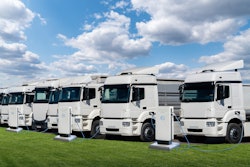
The California Air Resources Board’s (CARB) regulation to eliminate internal combustion engine (ICE) forklifts will cost California forklift owners and operators up to $27 billion, according to a new economic impact report released by the Western Propane Gas Association (WPGA).
“Throughout the rulemaking process, CARB did not adequately account for the overwhelming costs and impacts associated with its zero-emission forklift proposal,” says Colin Sueyres, president and CEO of WPGA. “It’s critical that CARB take a hard look at the real-world impact of its proposal and work with small businesses throughout the state who have proposed a cheaper, more feasible, and more effective way to meet the state’s air quality goals. Additionally, local communities and others can’t afford to be hit with unintended consequences not accounted for.”
Key takeaways:
- The regulations bring on increased costs that directly impact local communities, small businesses, food banks, non-profits, state agencies, and local governments. While some costs and impacts can be anticipated with the passage of this rule, there are unintended consequences that have not been accounted for that would have a rippling economic effect across the state.
- CARB vastly underestimated the number of forklifts that will impacted by the rule. CARB estimates 95,000 forklifts will be affected when in reality 220,000 (more than half of all forklifts in the state) will be impacted.
- $10 billion will be spent on ICE forklift replacements. Forklift owners will be required to replace ICE forklifts even if they are fully functional. Utilization loss caused by the proposed regulation will reach approximately $4.6 billion by 2038.
- By 2038, forklift battery costs will exceed $2.8 billion. Charging stations will costs will exceed $6.3 billion to implement. This cost does not factor in the cost of building power supply upgrades, or infrastructure upgrades for the generation, transmission and delivery of electricity.
- Costs to the state government amount to $33 million by 2038. The State of California, not including the UC and CSU systems, currently owns and operates 581 affected ICE forklifts.
- The total number of battery electric forklifts sold across North America (including the United States, Canada, Mexico) in 2022 was approximately 225,000. If CARB’s rule goes into effect, the majority of battery electric forklifts being sold in North America would – out of necessity – need to be sold within California just to keep pace with the implementation phase-in of the rule. This also does not address manufacturers' ability to scale battery electric production in a global marketplace where battery minerals become more coveted, expensive, and scarce.


















